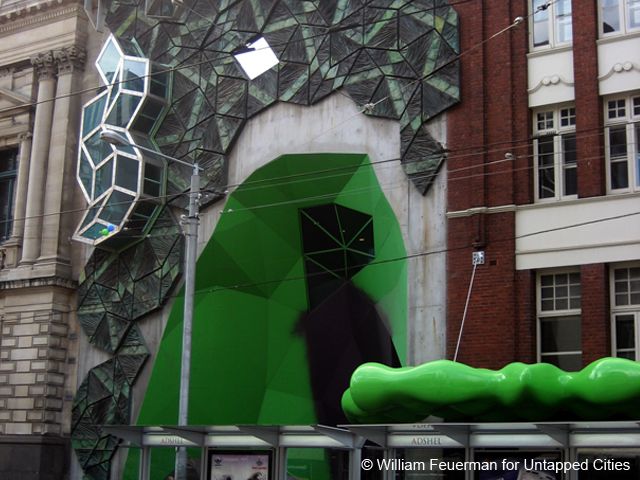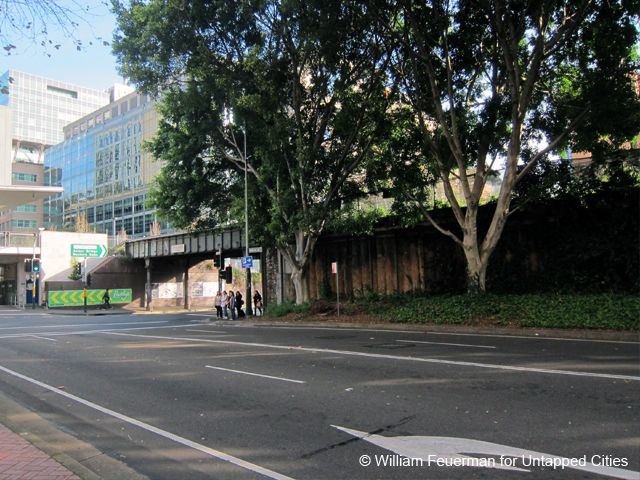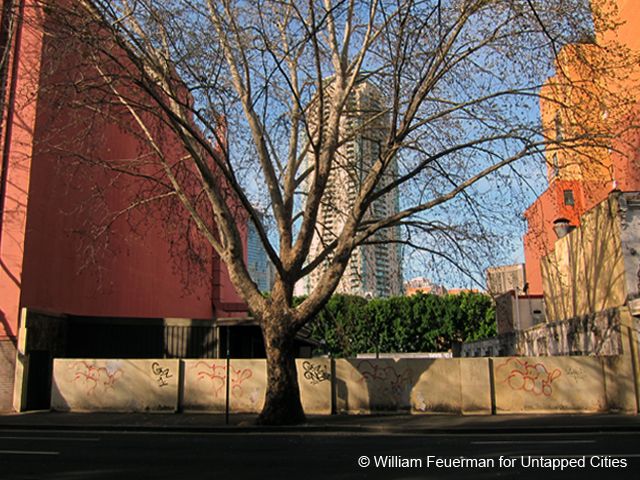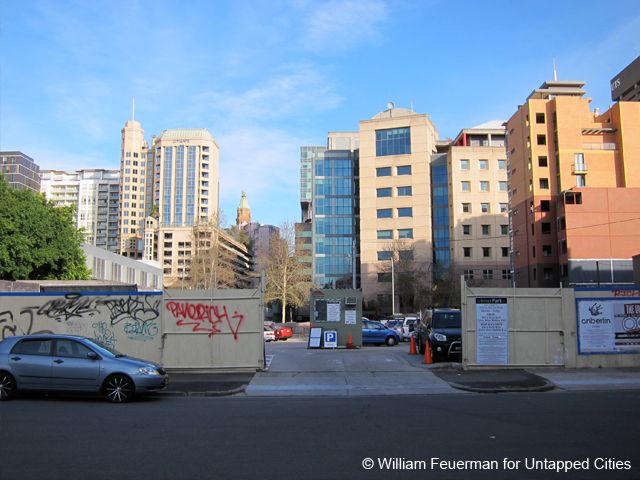How to See the Liberty Bell...in Queens
A copy of the famous American bell can be found inside a bank, which itself is modeled after Independence Hall!


Sydney has the epitome of all architectural icons in its famous opera house, but sometimes I wonder if that singular building, as much as it inspires creativity, also inspires a kind of complacency: where are its challengers and equals in the city’s new architecture? Even though I think of Sydney as an urban paradise, I worry sometimes that it lacks the architecture stamina and stimuli of cities such as New York (where I happen to come from, which is ambitious to a fault) or even Melbourne (which, not trying to exacerbate any local rivalries, has seen a lot of experimental new work, some of it successful).

RMIT, Storey Hall, Ashton Raggatt McDougall (1995)
Of course, and as mentioned in my last article, Sydney is in the midst of change but whether or not the new buildings in development will play a critical or essential role in the city’s identity is still up for debate. Either way, these new additions have, and will, add flavor to the skyline, whether you love them or hate them.
Cities like Melbourne pride themselves on experimentation, taking advantage of the tremendous and talented local architecture scene. You don’t have to like everything you are confronted with, and most likely you won’t, but one cannot help appreciate the city for its variation, whimsy and character. Examples of this can be found at the Royal Melbourne Institute of Technology (RMIT), such as Building 8 by Edmond and Corrigan (1993) or Ashton Raggatt McDougall’s, Storey Hall (1995). These buildings, along with the many others spread throughout the city, make Melbourne stand out as an architecturally progressive city.
Back in Sydney, the University of Technology Sydney (UTS), where I am proud to be on the architecture faculty, is aiming for a similar urban transformation. UTS is undergoing a billion dollar, ten year program of renewal that could drastically reinvigorate the neighborhood of Ultimo, which lies at the south end of the Central Business District (CBD). Included in this master plan is a new “podium” for UTS’ brutalist tower, a competition won by architects Lacoste Stevenson (which is under review); a new building for the UTS Faculty of Science by architects Durbach Block Jaggers (2013); the Broadway building, a competition won by Denton Corker Marshall for the UTS Faculty of Engineering and Information Technology (2013); and of course, the cornerstone building, Frank Gehry’s Dr Chau Chak Wing Building (2013).

UTS, Building 1
With a budget of around $150 million (Australian dollars) and a star architect like Frank Gehry, this building is getting most of the attention- both positive and negative. The UTS and Frank Gehry partnership has been defined through a range of voices. From UTS’s Vice Chancellor saying, “We’ve got the Opera House, and it’s hard to say we are going to beat that, but from what I’ve seen we’ll have an equally outstanding icon at this end of Sydney” to critics such as Germaine Gree, who writes “Imagine five brown paper bags with 15 windows cut in each side, scrunched up and then unscrunched and stacked together, and you’ve pretty much got it.”

Current site, East
Out of an existing parking lot, there will rise a building which stands tall on a pedestal, linking to the Ultimo Pedestrian Network (UPN). It will be a somewhat schizophrenic building, or at least that is how the exterior will read, a result of Gehry’s “working from the inside-out” process. Part of the building (facing the city and the University) will feature a “sandstone” colored undulating brick facade (I would have preferred the use of the actual material) while the other faà§ade, facing west, will include a series of large rectangular glass planes with an intention of reflecting the cityscape (although it’s kind of facing the wrong direction) or as Greer describes it, “trapping the blinding Australian afternoon sun.”

Current site, West
I am sure Gehry is used to a bit of controversy. When an architect pushes boundaries and designs something distinct, there will ultimately be criticism. Elizabeth Farrelly, a writer for the Sydney Morning Herald says, “We are all critics.” As she so eloquently puts it, “We all use, pay for, live in, walk around, drive past, smell and feel the buildings that comprise our city. Add thinking, and you have criticism.” She goes on to say that “criticism is, in its way, a form of praise; something to be earned.”
I grew up loving Frank Gehry (since my relationship with him has had its ups and downs). I was raised in Los Angeles before moving to New York and as a teenager I was a bit obsessed. There were many days spent with other architecture enthusiasts exploring his varied LA wonders (nerd alert). I would drive past his office, peer into the windows (through the shades) and analyze the desks full of models. I would regularly drive with friends to his house in Santa Monica and sneak around the perimeter. I was even caught once taking photos on his doorstep (embarrassing). He stood out to me because of his willingness to make the ordinary different and the ugly beautiful and glamorous.

Current site, North
Gehry is long past the gritty genius of his earliest LA work that I fell in love with, and all his recent work is in the shadow of his critical and cultural success at Bilbao-like Sydney, you worry that after a single epochal success, he risks complacency or confusion, or just lack of inspiration. But I have visited his works in other cities including Los Angeles, Seattle, New York, Cambridge, Prague, Paris, Barcelona and Bilbao and each has left a lasting impression (whether good or bad or everything in between). They are buildings that demand your attention, and that is half the battle. Having Gehry’s fingerprint on Sydney will act as an attractor and challenge for the architecture and urban enthusiasts out there, and for Sydney’s own architects. Even if not a “masterpiece” (mastery is in the eye of the beholder), Sydney’s Gehry building will have its own personality, adding character to what is now a fairly banal and somewhat alienated part of the city.
Subscribe to our newsletter